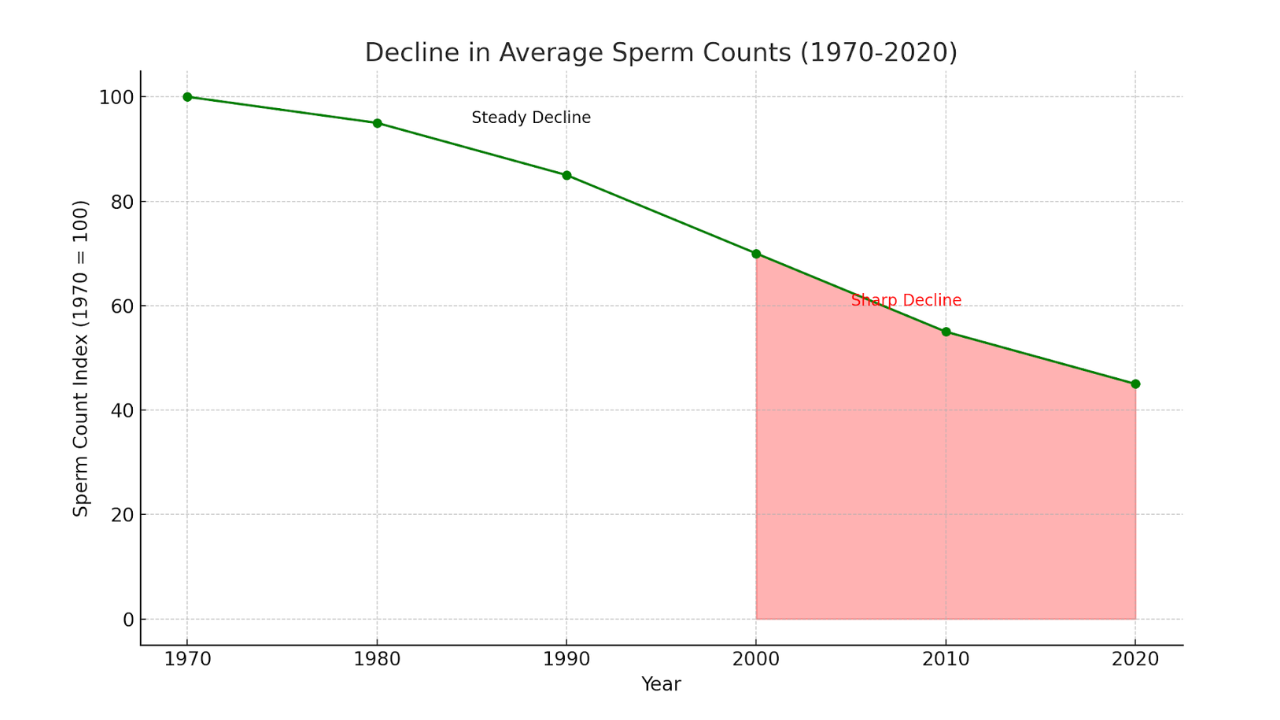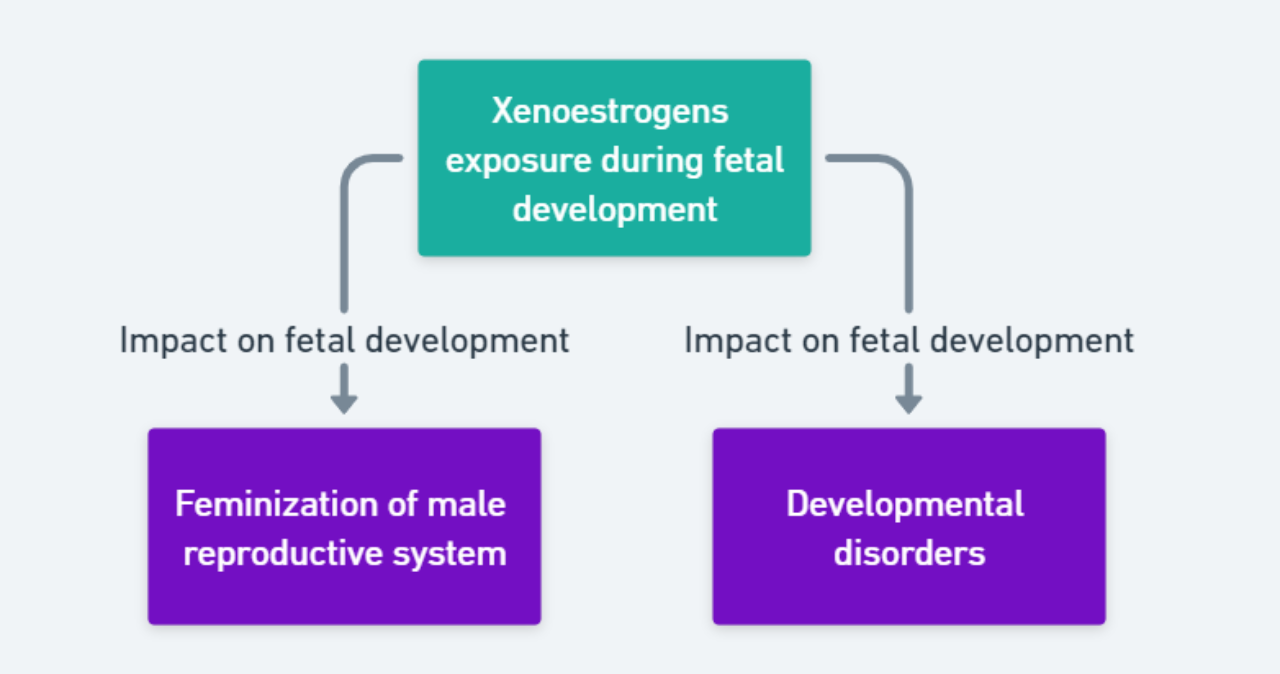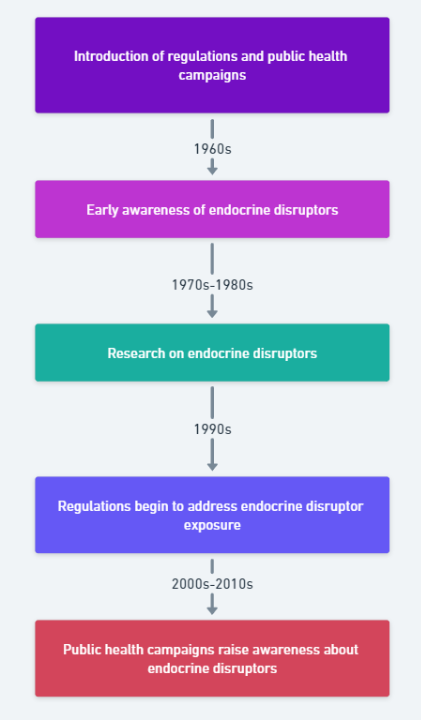The Hidden Crisis: Declining Fertility in the Western World
Introduction
For decades, fears of overpopulation have gripped the minds of intellectuals, especially since the 1960s Club of Rome meetings. These fears, however, are now at odds with a stark reality—many Western nations are facing a severe population implosion. Countries like the USA, Australia, England, and Italy have birth rates that are well below the replacement level of 2.2 live births per woman. This decline is often obscured by significant immigration from countries with higher birth rates, but beneath the surface, a more troubling issue is brewing: infertility.
The Silent Threat: Declining Sperm Counts
The population decline in many Western countries is primarily driven by a drop in birth rates, which are no longer sufficient to replace the aging population. This trend has led to a growing demographic imbalance, with fewer young people available to support an increasingly older population. This demographic shift has profound implications for social and economic structures, potentially leading to a collapse in systems that rely on a broad base of younger individuals.

Population Decline: A Closer Look
One of the most alarming aspects of this fertility crisis is the rapid decline in sperm counts. A 2017 study by Dr. Shanna Swan and colleagues revealed that sperm counts in men had decreased by an average of 1% per year over the past 50 years. More recent studies suggest that this decline has accelerated to 2.64% per year, doubling the rate of decline in just seven years. This steep drop in sperm quality and quantity is a major cause for concern and raises serious questions about the future of human reproduction.
Why Sperm Quality Matters?
While it only takes one sperm to fertilize an egg, the overall quality and quantity of sperm are crucial for successful reproduction. Low sperm counts and poor sperm motility (the ability to move effectively) significantly reduce the chances of conception. Moreover, sperm quality is a marker of broader male health, with links to overall lifespan and susceptibility to chronic diseases.

What's Behind the Decline?
- Chemical Exposure: Xenoestrogens, found in many industrial chemicals, mimic natural hormones and disrupt the endocrine system. These chemicals are ubiquitous in modern life, present in plastics, pesticides, and even personal care products. Xenoestrogens interfere with the body's hormonal balance, leading to reduced sperm production and quality.
- Electromagnetic Fields (EMF): The proliferation of electronic devices has led to increased exposure to EMFs. These fields can affect sperm quality by causing fragmentation and impairing the genetic material carried by sperm cells. EMFs are emitted by common devices such as mobile phones, Wi-Fi routers, and even household wiring.

The Impact of Xenoestrogens
- Plastics: Phthalates and bisphenol A (BPA) are commonly used in the production of plastics. These chemicals can leach into food and beverages, especially when exposed to heat. Phthalates are often found in soft plastics, while BPA is prevalent in hard plastics, such as water bottles and food containers.
- Pesticides: Many pesticides contain xenoestrogens that persist in the environment for years. These chemicals have been shown to significantly decrease sperm count, with some studies indicating that they can cause complete infertility in males.
- Cosmetics and Personal Care Products: Many personal care products, including shampoos, lotions, and makeup, contain xenoestrogens. These chemicals are absorbed through the skin and can accumulate in the body over time, disrupting hormonal balance and affecting fertility.
Consequences for Future Generations
The exposure to xenoestrogens and other endocrine-disrupting chemicals during critical periods of development can have long-term effects on both the individual and future generations.
One of the physical signs of exposure to xenoestrogens in utero is a reduced anogenital distance (AGD). AGD is the distance between the anus and the genitals, and it is typically longer in males than in females. However, studies have shown that males exposed to higher levels of xenoestrogens during development have a shorter AGD, which is associated with lower testosterone levels, smaller genital size, and reduced sperm count.
Feminization of Males

Exposure to xenoestrogens can lead to reduced testosterone production in males, resulting in feminization. This includes physical changes such as reduced muscle mass, altered fat distribution, and smaller genital size. These changes can also affect reproductive health, leading to lower fertility and increased risk of reproductive disorders.
Developmental Disorders
Assisted Reproductive Technology (ART)
Assisted Reproductive Technology (ART), such as in vitro fertilization (IVF), has become increasingly common as more couples struggle with infertility. However, research shows that male offspring conceived through ART often have lower sperm counts and poorer sperm quality compared to those conceived naturally. This suggests that the underlying fertility issues are being passed down to the next generation, potentially perpetuating a cycle of declining fertility.
Health Implications for ART Offspring
Beyond reproductive issues, studies have also found that ART offspring may be at higher risk for chronic conditions such as obesity, type 2 diabetes, and cardiovascular disease. These findings raise concerns about the long-term health implications of ART and highlight the need for better understanding of its effects.

What Can Be Done?
Personal Actions
- Reduce Chemical Exposure: Minimize the use of plastics, especially for food and drink storage. Opt for glass or stainless steel alternatives. Choose personal care products that are free of harmful chemicals and avoid pesticides by choosing organic foods.
- Adopt a Healthy Lifestyle: Focus on a balanced diet rich in nutrients that support reproductive health, such as zinc, selenium, and antioxidants. Regular exercise, stress management techniques, and avoiding smoking and excessive alcohol consumption can also improve sperm quality.
- Get Tested: Men should consider getting their sperm tested for count, motility, and fragmentation. If the results indicate problems, lifestyle changes and reducing exposure to harmful chemicals can help improve fertility.


Personal Actions
- Regulate Endocrine Disruptors: Governments and regulatory bodies need to implement stricter controls on the use of harmful chemicals in consumer products. This includes banning or limiting the use of known endocrine disruptors and promoting safer alternatives.
- Promote Awareness: Public health campaigns should educate people about the impact of environmental factors on fertility. This includes information on how to avoid exposure to harmful chemicals and the importance of maintaining a healthy lifestyle for reproductive health.
- Support Research: Continued research into the causes of declining fertility and the development of safer technologies and products is essential. This includes exploring alternatives to harmful chemicals and better understanding the long-term effects of ART.
Conclusion
The decline in fertility rates is not just a personal issue but a societal one that will have far-reaching consequences. If current trends continue, we may face a future where population decline is irreversible, leading to the collapse of social and economic systems. It’s time to take action by making informed choices about our environment and lifestyle, and by advocating for policies that protect future generations.
By understanding the factors behind declining fertility and taking steps to mitigate them, we can help ensure a healthier future for ourselves and our children.

References:
- Scott Wustenberg. Declining Fertility in the Western World. Full Detailed Version.
- Alice Pacher. No Sex in Japan - A Sociology of Sexlessness in Intimate Relationships.
- Dr. Jaime Mendiola. Andrology - Is anogenital distance associated with semen quality in male partners of subfertile couples?
- JN The Journal of Nutrtion. Association between Biomarkers of Phthalate Exposure and Serum Folate Concentrations in Children: A Population-Based Cross-Sectional Study of the NHANES from 2011 to 2016.
- Carrie Douglas. Barren States - The Population "Implosion" in Europe.
- Elsevier, Environmental Research. Effects of early exposure to phthalates on cognitive development and visual behavior at 24 months.
- Your Sexual Medicine Journal. Endocrine effect of phthalate metabolites and a butterfly effect of prenatal exposure to androgens on qualitative aspects of female sexual response- an initial survey.
- HHS Public Access. Sheena Martenies, Melissa Perry. Environmental and Occupational Pesticide Exposure and Human Sperm Parameters: A Systematic Review.
- HHS Public Access. Emily Barret, Lauren Parlett. Environmental exposure to di-2-ethylhexyl phthalate is associated with low interest in sexual activity in premenopausal women.
- Pfizer Australia Pty Ltd. Nonclinical Evaluation Report. BNT162b2 [mRNA] COVID-19 vaccine.
- Mark Mclelland. University of Wollongong. 'How to Sex'? The Contested Nature of Sexuality in Japan.
- International Journal of Environmental Research and Public Health. Pesticides in Drinking Water - A Review.
- Water Research. Migration and potential risk of trace phthalates in bottled water. A global situation.
- Journal of Personalized Medicine. Decrease in Sperm Parameters in the 21st Century: Obesity, Lifestyle, or Environmental Factors? An Updated Narrative Review.
- Food Additives Contaminants. Vol 26, No. 6. Migration of bisphenol A from plastic baby bottles, baby bottle liners and reusable polycarbonate drinking bottles.
- Human Reproduction Vol. 25, No. 2. Occupational exposure to bisphenol-A (BPA) and the risk of Self-Reported MaleSexual Dysfunction.
- International Journal of Occupational Medicine and Environmental Health. Occupational exposure to bisphenol A(BPA) in a plastic injection molding factory in Malaysia.
- Gestational Exposures to Phthalates and Folic Acid, and Autistic Traits in Canadian Children.
- American Journal of Epidemiology. Parental Subfecundity and Risk of Decreased Semen Quality in the Male Offspring: A Follow-up Study
- ResearchGate. Stavros Sifakis, Offie P Soldin, Mihalis Mparmpas, Aristidis M. Tsatsakis. Pesticide Exposure and Health Related Issues in Male and Female Reproductive System
- Elsevier. Environmental Pollution. Prenatal exposure to synthetic phenols and phthalates and child respiratory health from 2 to 36 months of life
- BioInitiative 2012. Section 24. Key Scientific Evidence and Public Health Policy Recommendations
- Journal of Developmental Origin of Health & Disease. The health outcomes of human offspring conceived by assisted reproductive technologies (ART)
- Journal of Toxicology and Environmental health, Part B. M. C. Buser & H. R. Pohl. Windows of Sensitivity to Toxic Chemicals in the Development of Cleft Palates

